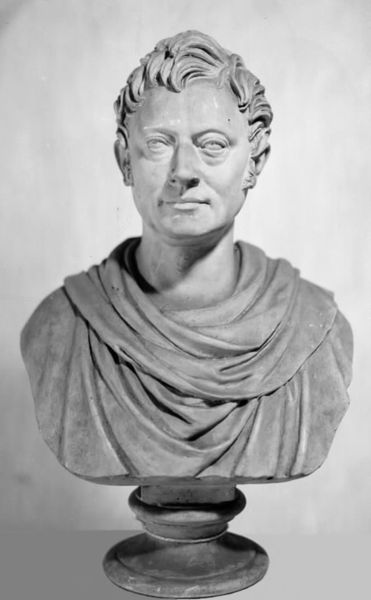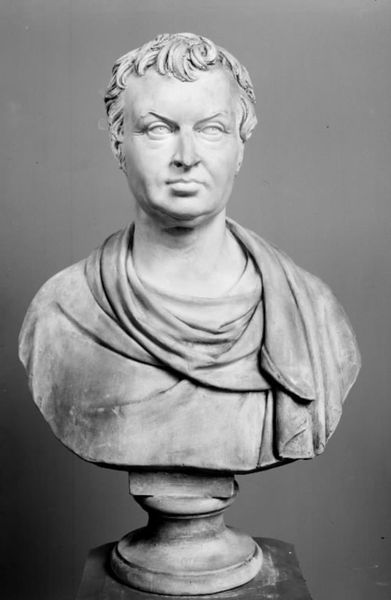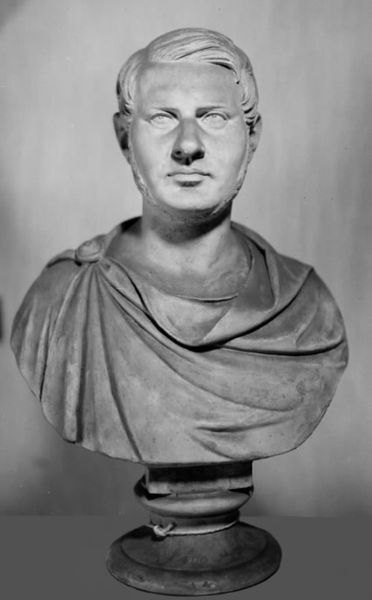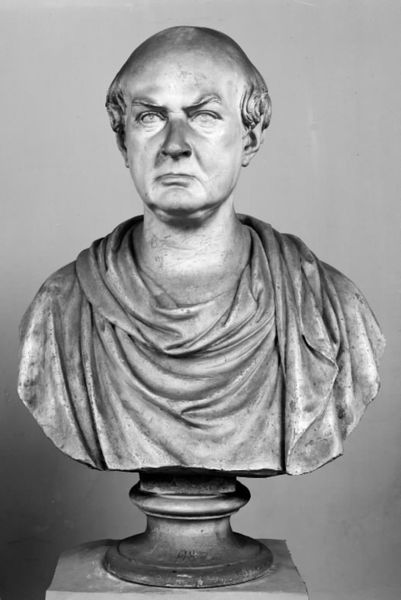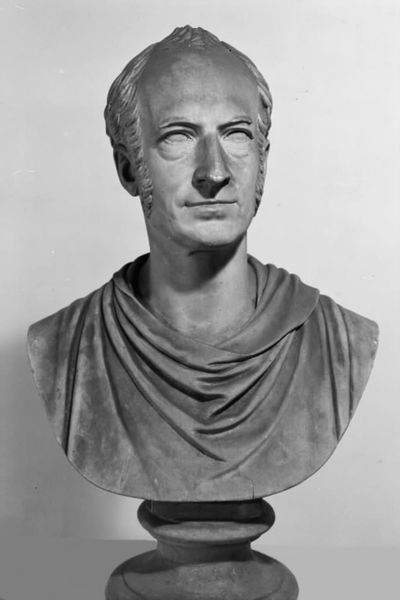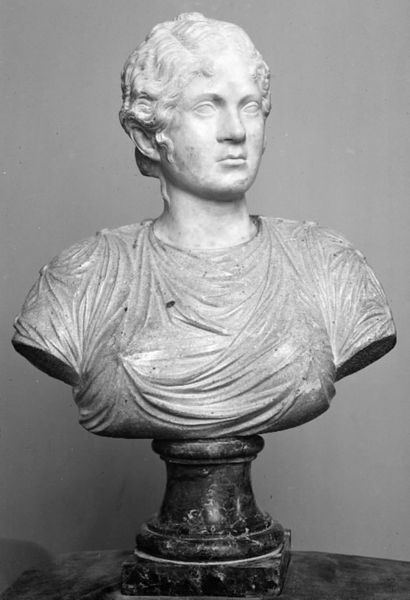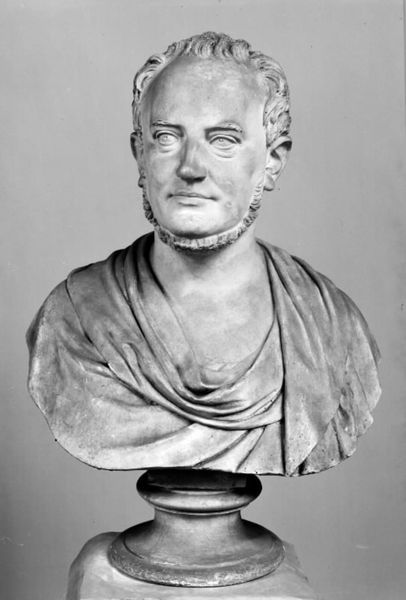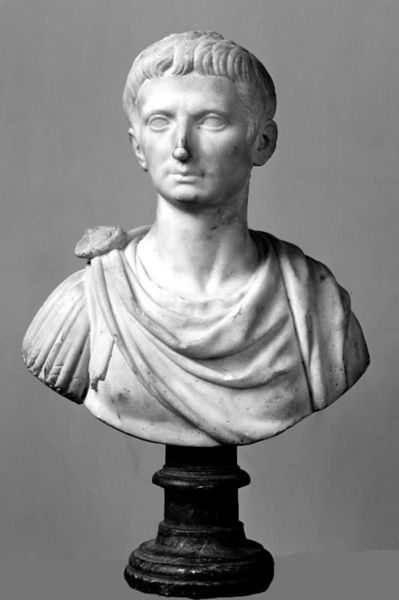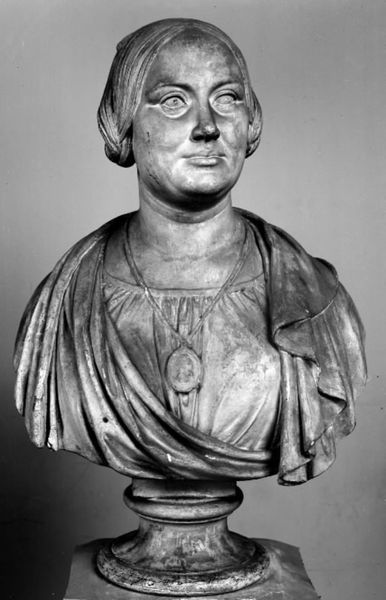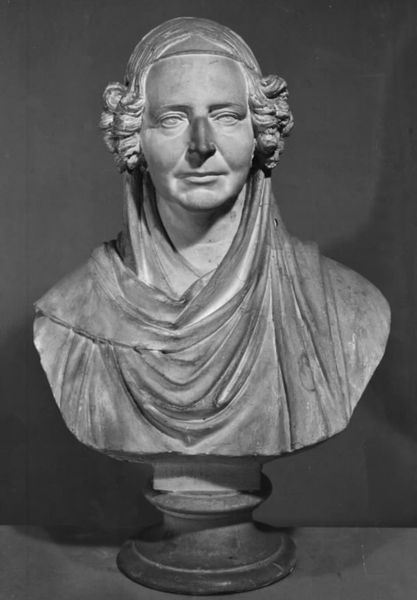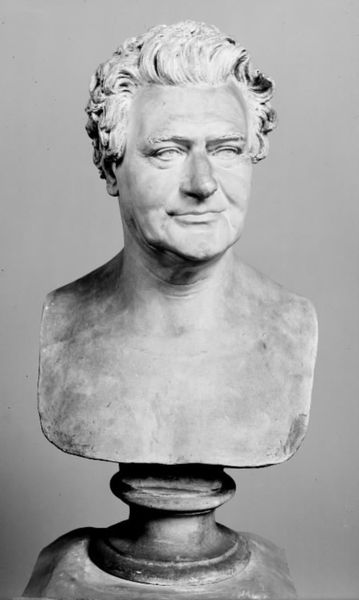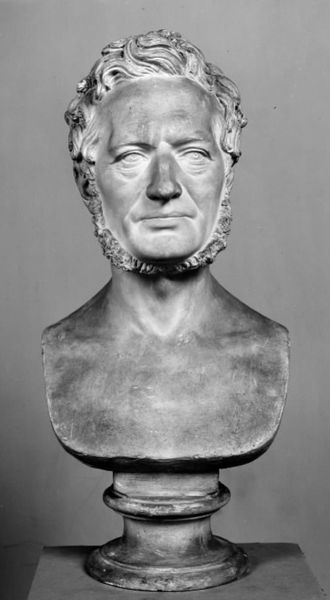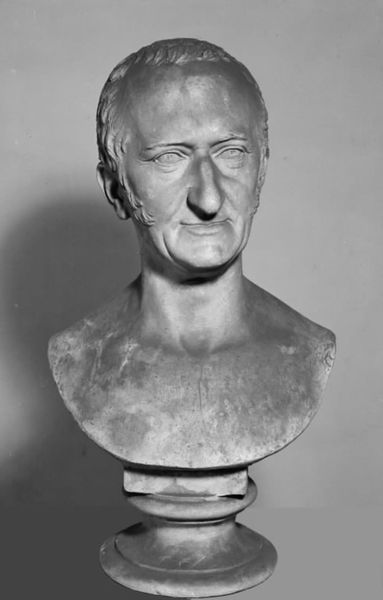
sculpture, marble
#
portrait
#
sculpture
#
classicism
#
sculpture
#
history-painting
#
marble
#
statue
Dimensions: 69.6 cm (height) (Netto)
Editor: We're looking at H.W. Bissen's 1853 marble sculpture, "Banker J. Hambro," currently at the Statens Museum for Kunst. It has a very stately and dignified feel. What can you tell us about its historical context? Curator: This bust speaks volumes about the relationship between wealth, power, and representation in 19th-century Denmark. Hambro was a significant figure, and commissioning a sculpture like this was a deliberate act. Consider where it would have been displayed – likely a prominent space within his home or perhaps a public institution. It’s about asserting status, perpetuating memory, and shaping public perception. How does the classical style play into that, do you think? Editor: I see what you mean. The classical style feels almost like an appeal to tradition and respectability. The drape of the toga-like garment certainly recalls Roman senatorial imagery. Was that a common way for powerful people to present themselves at the time? Curator: Precisely. Classicism was often used to legitimize authority by associating the sitter with the perceived virtues and grandeur of the ancient world. Think about how museums themselves were being established and shaped during this period. They became key sites for constructing national narratives, and portrait busts of important figures like Hambro contributed to that project. Can you see how this ties into a broader cultural narrative of the time? Editor: It's becoming clearer. The sculpture is not just a likeness but also a carefully constructed statement about Hambro's place in society. Almost like an early form of public relations. Thanks, this has given me so much food for thought. Curator: And for me, too. Considering how the art market operates in concert with societal hierarchies is something that should be emphasized more in today's cultural sector.
Comments
No comments
Be the first to comment and join the conversation on the ultimate creative platform.
